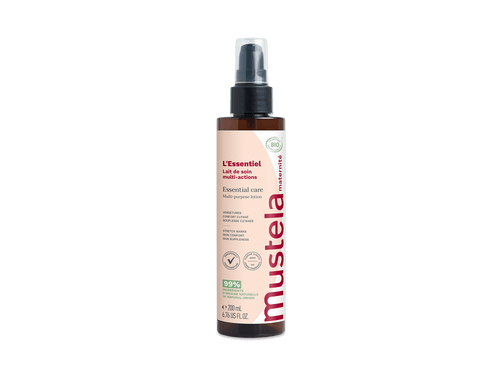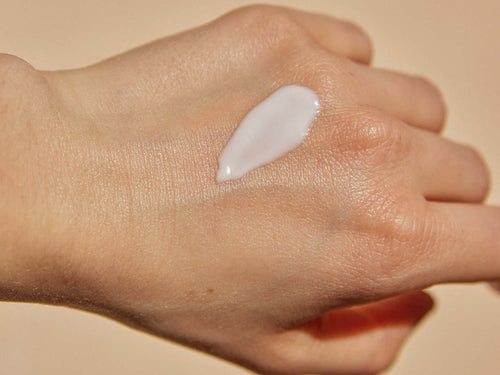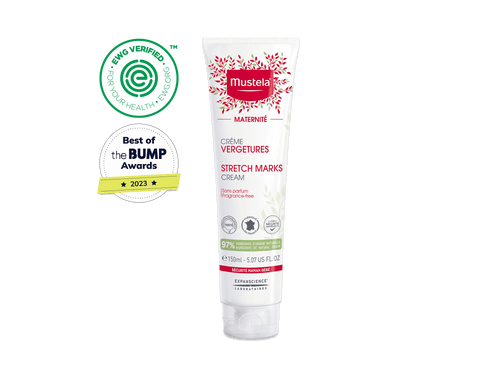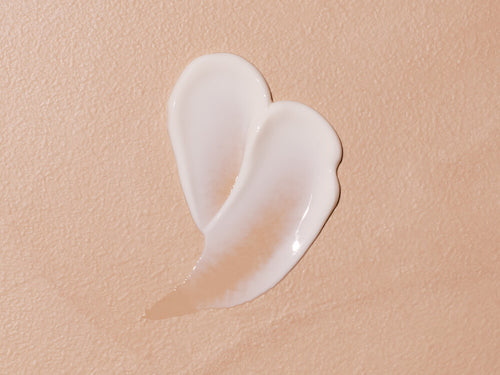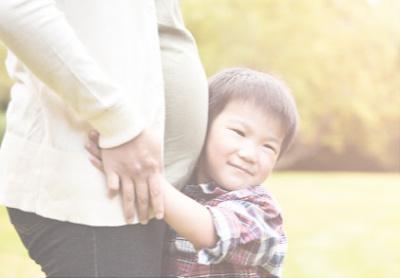Everyone knows that childbirth is no walk in the park. But you might not have expected to have challenges with breastfeeding as well. There are several ways breastfeeding can go awry, and cracked nipples are one of the worst.
If you have cracked nipples, you already know that this is a very uncomfortable, even painful, condition. You want relief so you can get back to comfortably nursing your little one and keeping both of you happy!
Mustela cares about natural, non-irritating solutions to keep you (and your baby!) healthy. In this article, we’ll talk about safe and natural ways to care for cracked nipples.
But before we jump into how to treat them, it’s important to understand why you have cracked nipples in the first place.
Table Of Contents
- What You Need To Know About Cracked Nipples
- What Causes Cracked Nipples?
- How To Treat Cracked Nipples
- 13 Natural Remedies For Cracked Nipples
- Frequently Asked Questions
What You Need To Know About Cracked Nipples

Cracked nipples are usually caused by an incorrect latch from breastfeeding, but not always. This painful, uncomfortable condition mostly occurs during the first month after delivery.
It will take some time for your nipples to heal, so don’t expect immediate, long-lasting relief right away. However, if you take a look at our natural remedy ideas, you can discover immediate, temporary relief.
Remember: the most important thing when it comes to healing correctly is getting to the root of the problem. Even if your cracked nipples seem to become worse when breastfeeding your little one, don’t stop breastfeeding! You can do it!
With the right help, your skin can heal in no time. Until then, keep reading to find out what exactly causes cracked nipples and what you can do to fix the problem.
What Causes Cracked Nipples?
First of all, women can develop irritated nipples even if they aren’t breastfeeding. If that’s you, the problem could be from rubbing or irritation (like wearing the wrong bra), a bacterial or fungal infection, or nipple eczema.
Speaking of eczema, if it runs in your family and your little one has eczema as well, don’t worry. When it comes to dressing, bathing, and wiping your eczema-prone baby, we’ve got you covered.

Mustela offers specifically designed products for eczema-prone skin — like Stelatopia Skin Soothing Pajamas, and our Eczema Essential Set.
But back to your painful, cracked nipples. If you’re breastfeeding and you find yourself with what appears to be a little crack or cut on your nipple, there are a few probable causes.
1) Incorrect Latch And Position

As we mentioned earlier, incorrect latching is a major cause of cracked nipples. When your baby latches on to your breast to nurse, their mouth should be over your entire nipple and part of the areola. This places your nipple at the back of their mouth, where it won’t be irritated.
But if your baby’s latch is too shallow, there will be a lot of pressure and suction on your nipple and it may rub against their mouth, causing irritation.
Since your little one (and you!) are figuring out this whole nursing thing, it may take them some time and a few tries before they correctly latch on to your nipple.
And because of the repeated sucking motion and adjustments, your nipples tend to get sore quickly. Over time, this can cause them to crack.
To avoid latching problems at home, it’s best to nail down the correct latch and position before you and your baby leave the hospital. To make this happen, reach out to the lactation consultant or tell your nurse you would like to speak with them.
At the hospital, a lactation consultant can come to your room and give you some pointers. If you and your baby still have latching problems when you get home (or you had a home birth), call the hospital and ask to speak to the lactation consultant.
Explain to her what is going on and be specific. She can give you some at-home tips over the phone.
2) Tongue Tie Or Other Mouth Condition
If you and your little one just can’t seem to get the hang of latching on correctly, it could be that your baby has a problem with their mouth. A condition like tongue tie, lip tie, or high palate might make it hard for them to nurse properly.
3) Nipple Confusion
Nipple confusion is just what it sounds like — your baby gets a bit disoriented and confused about what type of nipple he or she is sucking on.
If you’re breastfeeding and also giving your baby a bottle or pacifier, your little one might have a hard time switching back and forth and figuring out the right way to latch on to your breast.
It’s no surprise — there’s a pretty big difference in the size and texture of a mother’s nipple and the nipple of a bottle or pacifier!
One way to avoid nipple confusion is to avoid giving your baby a pacifier altogether during the first few weeks after birth, especially if you’re breastfeeding.
If your nipple — or the nipple on the bottle — is the only nipple they’ve been introduced to, they won’t have any nipple confusion.
It usually takes about a week or so for both you and your baby to catch on to the swing of things when it comes to breastfeeding. So it’s best to wait until your baby has mastered nursing before giving them a pacifier.
However, if your baby needs a pacifier at night to help them sleep (sometimes they will use you as a pacifier!), only give them one at nighttime and avoid it during the day during the first week or so.
4) Incorrect Use Of Your Breast Pump

If you’re using a breast pump, your baby’s mouth isn’t the only thing latching on to your nipple. Using the wrong size of breast shield or a too-high suction level might irritate your nipples.
Again, it’s important to allow your body time to adjust to your baby’s needs. Pumping during the first few days should be avoided as much as possible to ensure an abundant milk supply. Your body is amazing and will provide just what your baby needs!
If you’re pumping too much, not only can it irritate your nipples but it can also disrupt the production of milk for your baby.
How To Treat Cracked Nipples
When it comes to curing your cracked nipples, it’s important to get to the root of the problem, which is most likely the way your baby latches on to nurse.
First things first: like we mentioned earlier, talk to a lactation consultant for advice and tips. It’s not normal to be in pain while you’re breastfeeding, so don’t be afraid to ask for help!
A lactation consultant can show you how to get your little one to latch on correctly and help you find a pump that’s right for you and fits you properly. Once you address the cause of your cracked nipples, you’ll be on your way to healthy breasts and comfortable breastfeeding.
While your nipples are healing, keep an eye out for infection. Notice how you feel and if you have a fever.
You’ll also want to look for inflammation, redness, swelling, oozing, or pus in the nipple area. Talk to your doctor if you notice any of these symptoms.
There’s no doubt — dealing with cracked nipples can be painful and discouraging. To ease some of your discomfort and help your nipples heal, we’ve made a list of things to do.
13 Natural Remedies For Cracked Nipples
1) Notice Baby’s Hunger Cues

Figure out your baby’s signs that tell you they’re ready to eat. And don’t wait too long to feed them!
If your little one gets very hungry and impatient, it will be harder for both of you to get in the correct feeding position and for them to latch on correctly.
When this happens, your baby can get upset and start to nurse ravenously. It takes a few minutes for them to calm down. They’ll start sucking too hard and too fast to get the nutrition their body needs.
We know it will seem like you’re nursing around the clock in the first few weeks. You get done with one nursing session only to find yourself starting the next nursing session 30 minutes later.
It can be physically and mentally exhausting, but you’re doing great!
Your body and baby are both amazing. Your baby will let your body know what it needs. So pay attention to your little one’s hunger cues to avoid a ravenous (and nipple-irritating) nursing session!
2) Find The Right Latch And Position
You and your baby need to be on the same page when it comes to breastfeeding. They are figuring all of this out, and so are you!
If your nipples are cracked and sore, most likely, you’re stressed and uncomfortable while nursing. Your baby can sense your stress and will also become uncomfortable, which will make it more difficult to correct their latch and position.
The good news is that, once you’re relaxed, correcting your baby’s latch and position is easy with help from a nurse or lactation consultant, like we mentioned earlier.
That being said, keep in mind that your nipples may still hurt even if your baby is now latching on correctly. This is because it will take some time for your nipples to fully heal.
But before you know it, you and your baby will become breastfeeding pros!
3) Ice Before Breastfeeding
To ease the initial discomfort of baby latching on, try applying ice to your nipples before breastfeeding. The cold will help numb the area and take the sting off just a bit before you start nursing.
Wrap a few ice cubes in a light cloth or towel and gently press them to your skin for a few minutes. You can do this before feeding as well as throughout the day.
Cold cabbage leaves are also a great option because they’ve been known to help reduce pain and inflammation.
Place a few cabbage leaves on the inside of your nursing bra, or simply lay them on top of your breasts when you lie down.
4) Apply A Warm Compress After Nursing
In contrast to applying a cold compress before you breastfeed your baby, apply a warm compress afterward. The warmth can give your sore nipples temporary relief.
Simply soak a cloth in warm water and wring out the excess. Gently place the warm cloth over your nipples and let it sit for a few minutes. After removing the cloth, pat your nipples dry.
5) Hand-Express Your Milk
If breastfeeding or pumping is just too painful and all else fails, try hand-expressing your breast milk before nursing. It’s important to release your breast milk one way or another.
If you let the milk build up, your nipples won’t be the only sore thing on your body! Milk build-up can be very painful for your breasts and can make it even more difficult for your baby to latch on correctly.
Releasing this build-up helps reduce the risk of your breasts becoming engorged (overfull and hard) and developing mastitis. Doing this also helps maintain your milk supply and helps relieve sore and cracked nipples over time.
6) Start With The Healthy Side
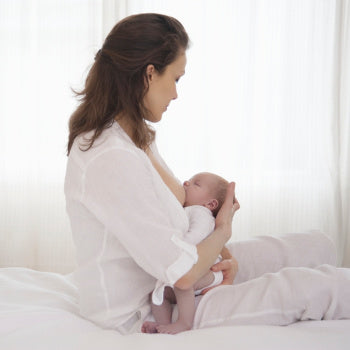
Both of your nipples might be in bad shape, in which case it doesn’t matter which one you start with when nursing your little one.
But if one side hurts more than the other, put your baby on the least painful side first. They’ll nurse more gently on the second breast because they won’t be as hungry.
7) Use Nursing Comfort Balm
Before you apply a cream or lotion to your breasts or nipples, check that it’s safe and healthy for both you and your little one.
Organic Nursing Comfort Balm is made of 100% naturally derived ingredients and contains nourishing olive oil, which is rich in Omega-6 and 9. Plus, it’s fragrance-free and dermatologist-tested.
Rest easy knowing our balm is also free from parabens, phthalates, and phenoxyethanol. It’s packed with vitamin E to help nourish and protect your skin.
Our dye-free formula won’t stain your clothes like most nipple creams, and it has a neutral smell and taste, making it safe for your baby.
After breastfeeding, apply our Nursing Comfort Balm with confidence, knowing that it’s eco-friendly, safe for both you and baby, and will soothe and protect your sensitive skin.
You can also apply our Nursing Comfort Balm after using a warm compress or after you get out of the shower to soothe and relieve your skin.
8) Apply Breast Milk
When it comes to applying soothing and healing products to your sore nipples, the most natural thing to use is your own breast milk! Dab a few drops of breastmilk onto your nipples after feeding your baby, then let them air-dry.
Your breast milk is antibacterial and, of course, super convenient! Just don’t apply breast milk if you have thrush.
9) Rinse With Saltwater
Rinsing your nipples with saltwater is another way to help the healing process. To make fresh saltwater, simply dissolve ½ teaspoon of salt into a glass (six or eight ounces) of warm water.
Then apply the saltwater to your nipples using a cotton ball or a spray bottle. You could also put the saltwater in a bowl and soak your nipples for just a minute or two.
Rinse your nipples off before nursing if your baby isn’t a fan of the salty flavor.
10) Air Out
It’s also important to take care of cracked nipples in-between breastfeeding times. If you are able, give your nipples some time to air out before putting your bra back on.
11) Wear The Right Bra
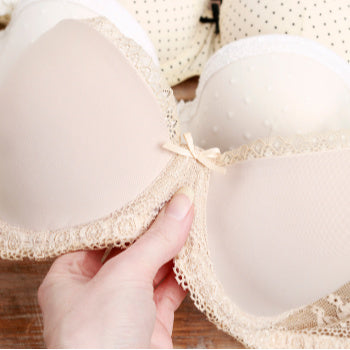
As far as the bra you wear, make sure it’s not too tight or too rough. You want to treat your nipples as gently as possible!
One more way to show cracked nipples some TLC: rinse your bras thoroughly after washing them. Why? Traces of detergent left on your bra could irritate your skin even more.
12) Use Breast Shells
If your bra or clothing rubs and irritates your nipples, try wearing breast shells. These are small plastic or silicone cups that sit on your breasts to keep your clothes from touching your nipples. Using breast shells will provide you with some relief and give your nipples time to heal.
13) Change Breast Pads Frequently
When purchasing breast pads, choose soft, cotton ones or disposable pads. Then be sure you change them frequently so they don’t stay wet on your nipples. Leaving wet breast pads on can further nipple irritation and increase your chances of getting an infection.
Take Care Of Yourself
We understand that cracked nipples can be extremely painful, but with the right care, you can usually treat this condition at home. As a new mom, it’s important to take care of yourself so you can take good care of your little one!

To do away with cracked nipples, first figure out what’s causing them. Then give yourself a little TLC and keep Mustela’s Nursing Comfort Balm on hand to help your nipples heal more quickly.
Remember to pay attention to your baby’s hunger cues and start with the healthy side first to avoid major discomfort. Use an ice pack before nursing to help numb the area, and use cabbage leaves or a warm compress in-between nursing sessions for temporary relief.
And nothing is more natural than using your own breast milk to treat the affected area! You can also rinse with saltwater and air out your breasts as much as possible, and remember to wear the right bra and frequently change out breast pads for optimal healing.
Follow the tips above to heal your tender, cracked nipples, and both you and your little one will soon be back to enjoying the sweet moments that breastfeeding provides!
Frequently Asked Questions
1) Can I Still Breastfeed With Cracked Nipples?
While breastfeeding with a cracked nipple might hurt (a lot!), it’s still possible to continue nursing. If you are having a hard time feeding your baby because of it, try different positions and hold your baby close to your body to reduce friction. You can also try a nipple shield or cream.
However, if your nipples are bleeding, you should switch to pumping to keep your supply up, and see a doctor. They can help you determine if there are any other underlying issues and create a plan to heal your nipples.
2) How Long Does It Take For Cracked Nipples To Heal?
There is no single answer to this question, as it depends on the severity of the crack and how well you take care of your sore nipples. In general, however, most cracks will heal within a few days to a week with proper care.
If your nipples aren't improving or start to bleed or ooze pus, see a doctor right away. You may have an infection and need antibiotics.
3) What Is The Fastest Way To Heal Sore Nipples?
According to the American Pregnancy Association, “warm, moist heat is soothing for sore nipples and can help your skin heal faster.” You can use a warm, wet cloth on your nipples for a few minutes before nursing, or try taking a shower.
You can also apply a cream, such as Mustela Nursing Comfort Balm, to your nipples. The special formula can help you heal. It’s also made with safe ingredients, so you don’t have to worry about using it on your breasts or having your baby come in contact with it.
4) Why Won’t My Cracked Nipples Heal?
Cracks in the skin take time to heal. But, if your cracked nipples aren't improving after a few days or your symptoms get worse after home treatments, seek medical advice from your doctor. They can see if you have an infection or any other problem going on.
It's also possible that an incorrect latch is aggravating the problem, which can prevent healing. Ask a lactation consultant or your baby's doctor for help with latching to ensure you aren't making the problem worse.
5) Are Cracked Nipples Normal?
Cracked nipples are a common problem for breastfeeding moms, but they aren’t normal. They indicate that something is not quite right, whether it’s the position of your baby during nursing, the way they latch, or an underlying infection.
The good news is that the crack can alert you that something is wrong. And once you identify and fix the problem, your nipples should start to heal.





